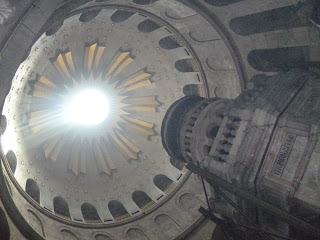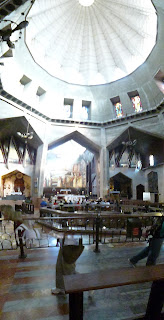Luke 22.55-65 When they had kindled a fire in the middle of the courtyard and sat down together, Peter sat among them. Then a servant-girl, seeing him in the firelight, stared at him and said, ‘This man also was with him.’ But he denied it, saying, ‘Woman, I do not know him.’ A little later someone else, on seeing him, said, ‘You also are one of them.’ But Peter said, ‘Man, I am not!’ Then about an hour later yet another kept insisting, ‘Surely this man also was with him; for he is a Galilean.’ But Peter said, ‘Man, I do not know what you are talking about!’ At that moment, while he was still speaking, the cock crowed. The Lord turned and looked at Peter. Then Peter remembered the word of the Lord, how he had said to him, ‘Before the cock crows today, you will deny me three ti mes.’ And he went out and wept bitterly. If anyone wants to see the exact courtyard where Peter was standing in this incident, this is it: This is the courtyard outside Caiaphas' palace in Jerus








